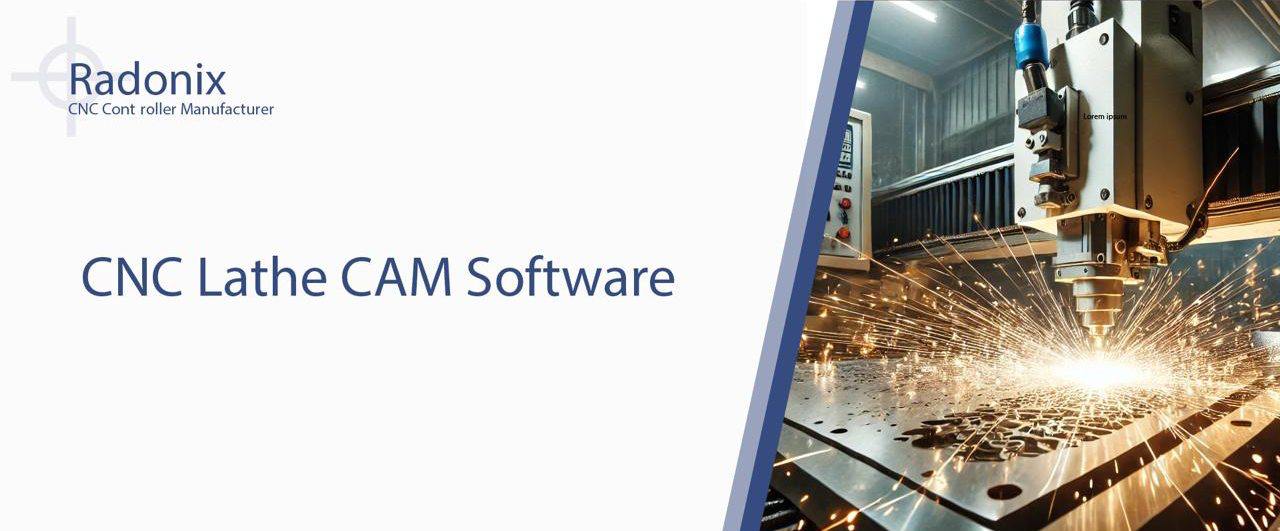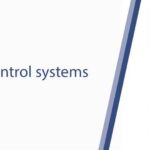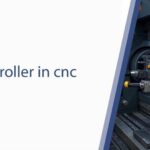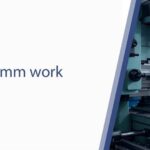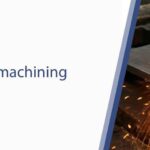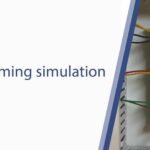In the realm of manufacturing, producing perfectly cylindrical or symmetrical parts with exacting precision is paramount. This is where CNC lathes shine, and their incredible capabilities are unlocked by the sophisticated CNC lathe CAM software that dictates every cut, movement, and tool change.
This isn’t just about creating toolpaths; it’s about optimizing turning operations, enhancing surface finish, minimizing material waste, and significantly boosting production efficiency.
This comprehensive guide will explore the critical functions, key features, and immense benefits of CNC lathe CAM software, and how Radonix’s advanced control solutions seamlessly integrate to bring your turning designs to life.
Why is Specialized CNC Lathe CAM Software Crucial for Modern Turning?
While general CAM software exists, specialized CNC lathe CAM software is indispensable for any serious turning operation.
Why? Because the unique mechanics and kinematics of a lathe demand purpose-built solutions.
The right software enables you to:
- Achieve Unrivaled Precision and Surface Finish: Lathe CAM software is designed to generate toolpaths that account for the rotational nature of turning, allowing for extremely precise cuts, intricate profiles, and superior surface finishes on cylindrical parts.
- Optimize Material Removal and Cycle Times: Dedicated turning strategies, such as roughing, finishing, grooving, threading, and drilling, are optimized within lathe CAM software to remove material efficiently, reducing overall machining time and increasing throughput.
- Minimize Material Waste: Advanced roughing and facing strategies ensure that material is removed economically, leading to less scrap and significant cost savings, especially with expensive bar stock.
- Handle Complex Geometries with Ease: From simple cylinders to complex contours, tapers, and intricate threads, CNC lathe CAM software provides the tools to program precise movements for even the most challenging turning operations.
- Reduce Programming Errors and Setup Time: Automated feature recognition, robust simulation, and predefined turning cycles within the software drastically cut down on manual programming errors and reduce the time spent setting up jobs on the machine.
- Enhance Tool Life and Machine Health: By optimizing cutting parameters (feeds, speeds, depths of cut) for specific materials and tooling, the software helps reduce tool wear, extends tool life, and minimizes stress on the lathe’s mechanical components.
- Facilitate Prototyping and Customization: Quickly generate and test toolpaths for new designs or custom orders, making prototyping faster and more cost-effective.
In essence, CNC lathe CAM software is the intelligence that transforms a powerful turning machine into a highly efficient, precise, and profitable production powerhouse.
The Integrated Workflow: From CAD to Part with CNC Lathe CAM Software
The journey from a digital design to a finished turned part involves a seamless integration of design, manufacturing planning, and machine control.
CNC lathe CAM software acts as the central orchestrator in this process.
CAD (Computer-Aided Design) Phase: Defining the Part Geometry
- Purpose: This is where the cylindrical part, its features (diameters, lengths, grooves, threads, bores), and overall dimensions are digitally created. While not strictly part of CNC lathe CAM software, it’s the preceding and essential step.
- Functionalities: 2D drafting for profiles, 3D modeling (often revolve features for cylindrical parts), assembly design (if the turned part is part of a larger assembly).
- Output: A digital model (e.g., DXF, DWG, STEP, IGES, SolidWorks, Fusion 360 files) that accurately represents the final turned part.
- Radonix Relevance: Our CNC lathe controllers are designed to flawlessly execute the G-code derived from any standard CAD model.
CAM (Computer-Aided Manufacturing) Phase: Planning the Machining Process
- Purpose: This is the core function of CNC lathe CAM software. It imports the CAD model, defines the raw material, selects cutting tools, and generates the precise toolpaths.
- Key Functionalities for Lathe CAM:
- Feature Recognition: Automatically identifying turnable features like outside diameters (ODs), inside diameters (IDs), faces, grooves, and threads from the imported CAD model.
- Roughing Operations: Generating toolpaths to remove bulk material quickly, often in multiple passes, to bring the workpiece close to the final desired shape. This includes OD/ID roughing, face roughing.
- Finishing Operations: Creating toolpaths for light, precise cuts to achieve the final dimensions and desired surface finish.
- Grooving: Programming toolpaths for cutting internal or external grooves of various shapes and sizes.
- Threading: Generating precise toolpaths for cutting external (OD) or internal (ID) threads, requiring accurate synchronization between spindle rotation and tool movement.
- Drilling/Boring: For creating holes along the center axis or boring existing holes to a larger diameter. Some advanced systems can also program off-center drilling with live tooling.
- Parting Off: Programming the toolpath to cut the finished part from the bar stock.
- Tool Library Management: A comprehensive database of turning tools (inserts, holders, drills, grooving tools, threading tools) with their geometry and recommended cutting parameters (feed rates, surface speed, depth of cut).
- Cutting Parameter Optimization: Calculating optimal spindle speeds (RPM or Constant Surface Speed – CSS), feed rates, and depth of cut based on material type, tool properties, and desired finish.
- Workholding/Fixturing Definition: Defining chucks, collets, and tailstock positions to ensure proper clamping and avoid collisions.
- Simulation and Verification: A crucial step to prevent costly errors. The software simulates the entire turning process, showing material removal, tool movements, and identifying potential collisions between the tool, workpiece, chuck, or tailstock. This saves material, machine time, and prevents damage.
- Post-Processing: The final and most critical output of CNC lathe CAM software. It converts the generic toolpath data into specific G-code and M-code tailored to the unique syntax and requirements of your particular CNC lathe’s controller. This customization is vital for successful machine operation.
- Popular CNC Lathe CAM Software: Mastercam Lathe, GibbsCAM Lathe, Esprit, Fusion 360 (Turning module), SolidWorks CAM (Turning), FeatureCAM, Edgecam.
- Radonix Relevance: Our CNC lathe controllers are designed with extensive post-processor compatibility. They can flawlessly interpret G-code generated by all leading CNC lathe CAM software solutions, ensuring your precisely calculated turning operations are executed with optimal accuracy and efficiency.
CNC Control Software Phase: Executing the Machining Process (Radonix’s Core)
- Purpose: This software (running on the CNC lathe’s controller, often a dedicated hardware unit from companies like Radonix) is the direct interface between the G-code and the lathe’s physical components.
- Key Functionalities:
- G-code Interpretation and Execution: Loading the G-code file and translating each line into precise electrical signals that drive the lathe’s axes (X, Z, and often C/live tooling axes), spindle, and other auxiliary functions.
- Real-time Monitoring: Displaying critical machine status, tool position, spindle speed, feed rate, current line of G-code, and overall program progress to the operator.
- Machine Setup and Zeroing: Allowing operators to establish machine home positions, set workpiece origins (G54-G55 offsets), and manage tool offsets (tool length, nose radius, wear compensation).
- Manual Control (Jogging): Enabling operators to manually move the lathe’s axes for setup, inspection, or troubleshooting.
- Spindle Control: Precise control over spindle RPM, constant surface speed (CSS), and spindle orientation for C-axis operations.
- Tool Management: Managing automatic tool changes (for turrets or tool carousels) and applying correct tool offsets.
- Safety Interlocks and Emergency Stop (E-Stop): Implementing critical safety features that immediately halt machine operation in case of an emergency, door open, or detected fault.
- Program Editing: Some control software allows for minor on-the-fly G-code edits.
- Machine Calibration: Fine-tuning motor parameters, backlash compensation, and other machine-specific configurations.
- Radonix Relevance: At Radonix, this is our core strength. We design and manufacture robust CNC lathe controllers and develop highly optimized control software that acts as the intelligent conductor for your CNC turning operations. Our CNC lathe control software is tailored for:
- Unrivaled Precision and Repeatability: Translating G-code into incredibly accurate and repeatable machine movements, crucial for consistent turned parts.
- Exceptional Reliability and Stability: Engineered for continuous, demanding industrial environments, minimizing downtime and ensuring steady production.
- Intuitive User Interface: Designed to be user-friendly, reducing operator training time and potential errors during setup and operation.
- Broad G-code Compatibility: Our controllers flawlessly execute G-code generated by the vast majority of CNC lathe CAM software solutions, ensuring smooth integration into your existing workflow.
- Advanced Safety Features: Prioritizing operator and machine safety with comprehensive interlocking and immediate emergency stop capabilities.
- Robust Diagnostic Tools: Providing clear feedback for efficient troubleshooting and maintenance.
Key Features to Look for in CNC Lathe CAM Software
When investing in CNC lathe CAM software, consider these essential features that will significantly impact your productivity, precision, and overall efficiency:
- Comprehensive Turning Strategies: Ensure the software offers a wide array of turning operations:
- OD/ID Roughing (various patterns: zigzag, plunging, contouring)
- OD/ID Finishing
- Grooving (external, internal, face)
- Threading (external, internal, tapered, multi-start)
- Drilling/Boring (axial and radial if live tooling is present)
- Parting Off
- Taper/Contour Turning
- Bar Pulling (for automated production)
- Feature Recognition and Automation: Software that can automatically identify turnable features from your CAD model significantly speeds up programming. Look for features that automate common turning cycles.
- Advanced Tool Library: A robust library for various turning inserts, holders, and specialized tools, allowing for custom tool definitions and automatic parameter suggestions based on material.
- Cutting Parameter Optimization: The ability to automatically calculate and optimize feeds, speeds (including Constant Surface Speed – CSS), and depths of cut for different materials and tool types to maximize tool life and surface finish.
- Realistic Simulation & Verification: A high-fidelity simulation is paramount for turning. It should accurately show material removal, tool movements, and, most importantly, detect potential collisions between the tool, workpiece, chuck jaws, tailstock, and turret. This is a crucial safety and cost-saving feature.
- Customizable Post-Processors: This is non-negotiable. The CAM software MUST be able to generate G-code specifically tailored to your CNC lathe’s controller (like a Radonix controller). Verify that the software either includes a post-processor for your specific controller or allows for easy customization/creation of one.
- Workholding Definition: The ability to accurately define chucks, collets, and tailstock in the CAM environment to ensure collision detection is accurate.
- Multi-Turret/Live Tooling Support: If your lathe has multiple turrets or live tooling (for milling, drilling, tapping on the turned part), ensure the CAM software fully supports simultaneous and synchronized operations.
- Error Handling and Diagnostics: Software that provides clear error messages and diagnostic tools for both programming and simulation.
- Scalability and Updates: Can the software handle increasingly complex parts or additional lathe capabilities (e.g., sub-spindle, Y-axis, B-axis)? Does it receive regular updates?
- Technical Support and Community: Access to reliable technical support and an active user community is invaluable for learning and troubleshooting.
The Future of CNC Lathe CAM Software
The evolution of CNC lathe CAM software is relentless, driven by advancements in artificial intelligence (AI), machine learning (ML), and the Internet of Things (IoT).
Radonix is committed to staying at the forefront of these innovations, ensuring our control systems are ready for the next generation of turning.
- AI-Powered Process Optimization: AI will increasingly assist in automatically selecting optimal turning strategies, predicting tool wear, and suggesting the best cutting parameters based on material, machine, and desired output, going beyond simple database lookups.
- Generative Design for Turned Parts: AI could aid in generating optimized part geometries specifically suited for turning, taking into account manufacturability and performance.
- Predictive Maintenance Integration: CNC lathe CAM software will integrate more deeply with machine sensors to monitor spindle load, vibration, and temperature, predicting potential mechanical failures before they occur and scheduling proactive maintenance.
- Cloud-Based Collaboration and Remote Monitoring: Cloud-native CAM platforms will enable seamless collaboration among designers and programmers, remote monitoring of lathe status, and centralized management of manufacturing data.
- Enhanced Digital Twin for Turning: Creating highly accurate virtual replicas of your CNC lathe will allow for even more precise simulations, real-time optimization of cutting parameters, and virtual commissioning of new programs.
- Automated Quality Control: Direct integration with in-process metrology (measurement) devices will enable real-time quality verification, with feedback loops that can automatically adjust subsequent cuts to maintain tight tolerances.
- Voice Control and Augmented Reality (AR) Interfaces: Imagine programming turning operations with voice commands or seeing digital overlays of toolpaths and machine data through AR glasses on your workshop floor, streamlining setup and monitoring.
Radonix is committed to incorporating these cutting-edge technologies into our future CNC lathe control systems and software, ensuring that our clients remain competitive and at the forefront of turning innovation.
Conclusion
CNC lathe CAM software is the indispensable intellectual engine behind every precise and efficient turning operation.
It’s the sophisticated tool that transforms your abstract designs into tangible, high-quality cylindrical components, driving efficiency, consistency, and innovation.
From the initial design phase to the meticulously calculated toolpaths and the final, precise execution by the CNC controller, this specialized software is crucial.
At Radonix, we understand this intricate ecosystem.
Our CNC lathe control systems are engineered to be the robust, reliable, and intelligent command centers that flawlessly interpret the G-code generated by your CNC lathe CAM software, ensuring your digital designs are flawlessly translated into physical reality.
We are dedicated to providing the foundational control technology that allows your CAM investment to truly shine.
Discover how Radonix solutions can revolutionize your turning workflow. Visit Radonix for more information and to connect with our expert team.

